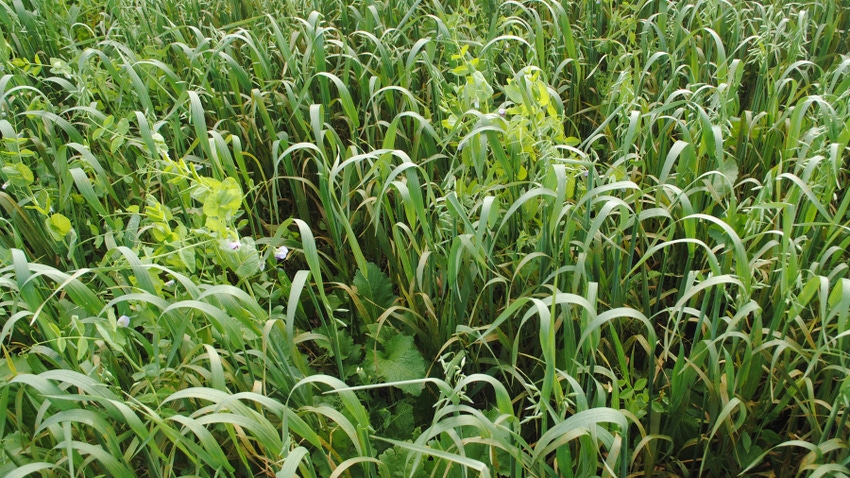
For Ulysses, Neb., farmer Lukas Fricke, it’s like hitting the “easy” button. Working with his local conservationist at Central Valley Ag to employ and document conservation, or carbon-friendly, practices on their farm through the Truterra carbon program has been what Fricke calls “super-simple” and a “no-brainer.”
That’s the idea, says Jamie Leifker, president of Truterra LLC, a Minnesota-based agricultural sustainability business that offers consultation, tools and solutions for the ag and food value chain — including a carbon program that pays farmers for practices that sequester carbon on their farms.
And now, the Truterra program, administered through local cooperatives, got more farmer friendly by expanding to include sustainable practices that were implemented as far back as 2021.
Expanded eligibility
For the first time going into this growing season, Truterra is expanding eligibility for its carbon programs to include longer-term adopters of conservation-related practices, such as reduced tillage and cover crops, going back to 2021.
“This has been long-awaited for farmers,” Leifker says. “We’ve been thought leaders in providing innovative practice options in 2024 for long-term adopters of conservation practices. It allows us to take inventory of practice changes across the farm, in addition to increased production efficiencies gained over time like increased yields, tracking efficiency per bushel or per unit, reduced carbon emissions — this concept is totally unique.”
So far, Truterra’s carbon credit program has paid more than $9 million, sequestering 462,000 metric tons of carbon through the practices of 273 farmers, with average payments to individual farmers at $18,000.
With this new option that accounts for previously adopted conservation practices, Leifker expects the Truterra program to grow by leaps and bounds.
It’s easy
Fricke is a sixth-generation farmer, working with his brother and mother on their Butler County operation. They have a medium-sized row crop operation that also includes seed corn production and a hog operation.
Jumping into the carbon program through Truterra was as simple as using the data they were already collecting on their farm — like how many passes through the field, cover crop plantings and how many nitrogen applications — and getting that information back to Fricke's conservationists at Central Valley Ag, and Truterra does the rest.
“If you are a farmer tracking your breakeven costs, you are already collecting this data,” Fricke says. “You pick the fields you want to use through their online portal, establishing field boundaries, and then you simply add your practices. When did I plant? When did I harvest? Did I plant cover crops? You are already doing those pieces of data.”
“The program is driven with farmers in mind,” Fricke adds. “It’s nice for Truterra to help us see those practices from a dollars-and-cents standpoint. It was easy, and they are great people to work with. The contract is farmer friendly.”

USING THE PROGRAM: Lukas Fricke, a sixth-generation farmer from Ulysses, Neb., farms with his brother and mother in Butler County, Neb. They raise row crops and seed corn, and also have a hog operation. Fricke has been involved in carbon programs for a few years and offers some tips for these programs, including the Truterra carbon program. (Farm Progress photo)
For Fricke, carbon programs are nothing new. They’ve been exploring carbon program options for the past few years. The family has been strip-tilling since 2017 and has been planting cover crops, especially on their seed corn production acres.
“The best thing about this program is that they understand that not all fields are the same, so we try to pick the best practices for every acre,” Fricke says.
“This can be a new income source to the farmer,” he adds. “It is refreshing to have a program to pay people for practices that build better soils, better crops and better microbes in the soil.”
Bridging the gap
Leifker says that this program is bridging the gap between what farmers are doing and companies with sustainability goals who choose to make agriculture part of their toolkit of solutions.
Studies show that consumer goods and products made with sustainability goals are growing faster than those made without them. That’s why Truterra is focused on playing a role in offering solutions to companies pushing to decarbonize supply chains and meet greenhouse gas emission reduction goals, Leifker says.
“To make this happen, we want to meet farmers where they are at,” he adds. “If they are interested, they should contact their local ag retailer and ask about the Truterra carbon program and how to participate. Those retailers can serve as a trusted adviser for participating in the carbon program, to walk with farmers and truly meet their needs.”
“It goes back to record-keeping and if you have a good farm management system,” Fricke says. “That’s your biggest challenge, but if you have good records and are financially and sustainably wise, running the scenarios and doing breakevens, it makes it easy to participate, especially with yield maps and having that accurate information.”
Learn more about the Truterra carbon program and expanded eligibility by contacting your local ag retailer or by visiting truterraag.com/enroll.
About the Author(s)
You May Also Like






